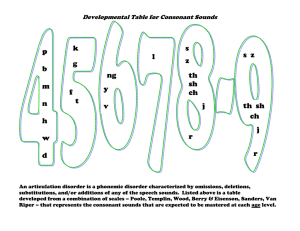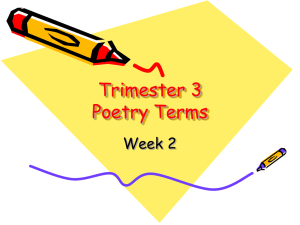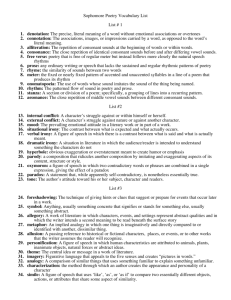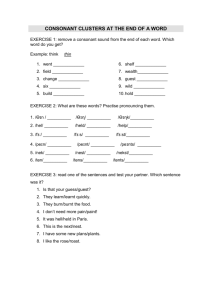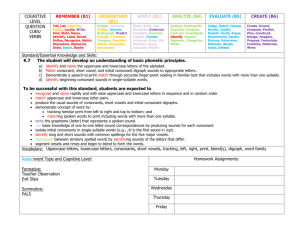Consonant Spelling and Consonant Sounds
advertisement
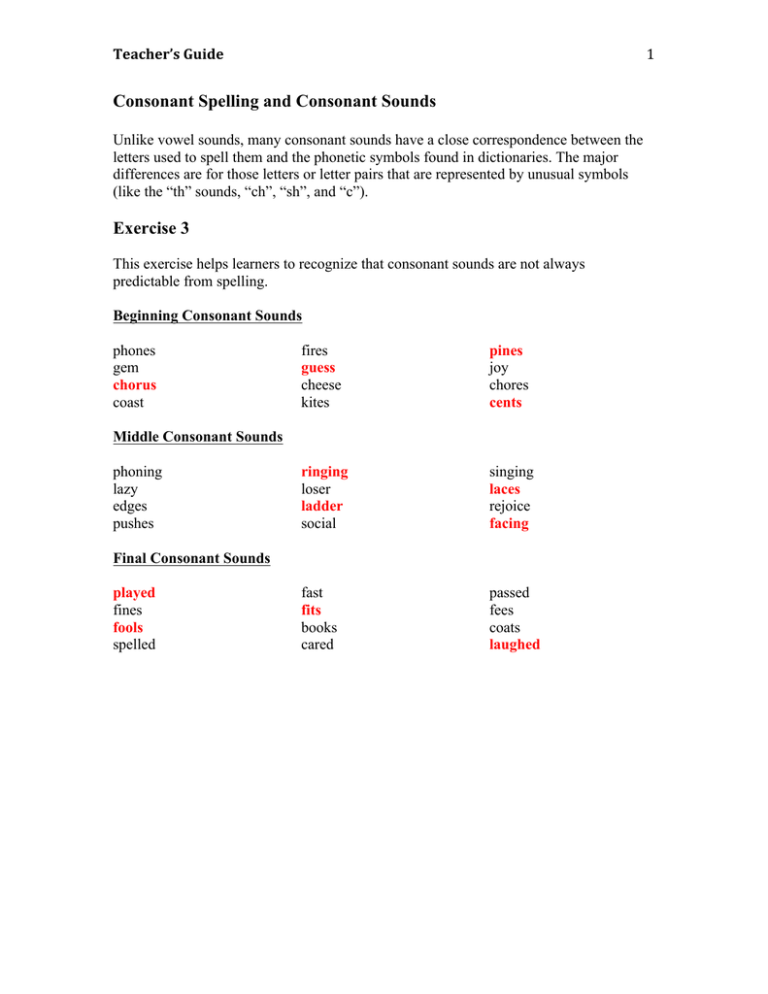
Teacher’sGuide 1 Consonant Spelling and Consonant Sounds Unlike vowel sounds, many consonant sounds have a close correspondence between the letters used to spell them and the phonetic symbols found in dictionaries. The major differences are for those letters or letter pairs that are represented by unusual symbols (like the “th” sounds, “ch”, “sh”, and “c”). Exercise 3 This exercise helps learners to recognize that consonant sounds are not always predictable from spelling. Beginning Consonant Sounds phones gem chorus coast fires guess cheese kites pines joy chores cents ringing loser ladder social singing laces rejoice facing fast fits books cared passed fees coats laughed Middle Consonant Sounds phoning lazy edges pushes Final Consonant Sounds played fines fools spelled Teacher’sGuide 2 Exercise 4 This exercise uses words that many students find confusing and asks them to identify the differences. Each pair of words is pronounced differently. Look up the words and tell what sounds are different by using the symbols. 1. singer finger singer has [ŋ] in the middle, finger has [ŋg] 2. kite quite kite starts with [k] and quite with [kw] 3. chicken kitchen kitchen chicken starts [tʃɪk] and kitchen starts [kɪtʃ] 4. race raise [res] and [rez] 5. wins wings [wɪnz] and [wɪŋz] 6. version virgin [vʌrʒən] and [vʌrʤən] 7. tacks fax [tæks] and [fæks] 8. jest guest [gɛst] and [ʤɛst] Exercise 5 Word phoned rang fox cinch goes blog lazy gem shoe beige hats plaid view wealth this quick Textbook Symbol /fond/ /ræŋ/ faks /sɪntʃ/ /goz/ blag /lezi/ /ʤɛm/ /ʃu/ /beʒ/ /hæts/ /plæd/ /vyu/ /wɛlθ/ /ðɪs/ /kwɪk/ Your Dictionary /fəʊnd/ NA /fɒks/ NA /ɡəʊz/ /blɒɡ/ /leɪzi/ /dʒem/ /ʃuː/ /beɪʒ/ NA NA /vjuː/ /welθ/ NA NA
